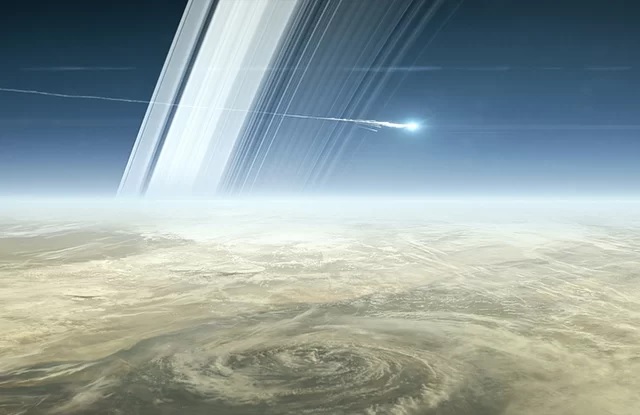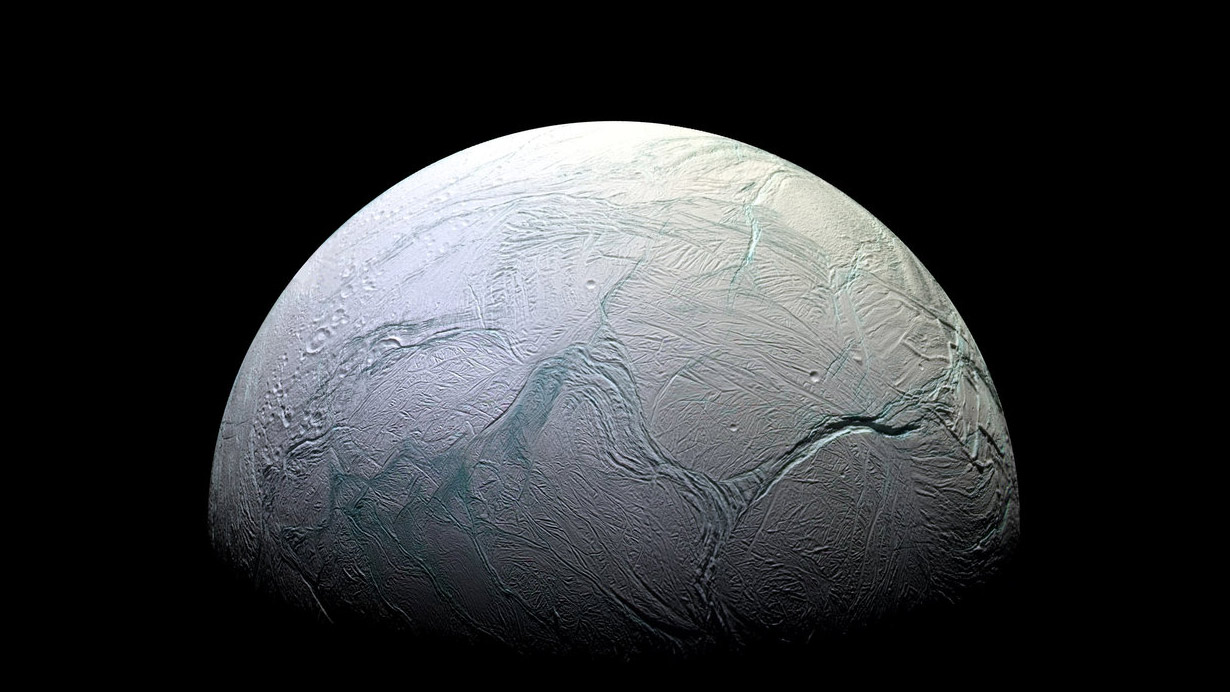Celebrating Cassini: NASA Saturn Probe Died 1 Year Ago Today
NASA's Cassini Saturn probe may be gone, but it's far from forgotten.
Cassini plunged intentionally into the ringed planet's thick atmosphere one year ago today (Sept. 15), ending a storied 13-year run through the Saturn system.
Cassini's observations have already revolutionized scientists' understanding of the gas giant, its iconic rings and its many moons. And more revelations are sure to come. [Cassini's Greatest Hits: The Best Images of Saturn]
"In so many ways, with this huge, 13-year fire hose of data, we've really only skimmed the cream off the top," Cassini Project Scientist Linda Spilker, who's based at NASA's Jet Propulsion Laboratory (JPL) in Pasadena, California, told Space.com. "But there's more there in the data."

Some of the newly analyzed stuff will come out early next month. A series of papers based on observations Cassini made during its daring final orbits of Saturn will be published Oct. 5 in the prestigious journal Science, Spilker said.
NASA is funding one more year of data analysis for the mission, she added. But the study of Cassini observations, and the discoveries flowing from such work, won't dry up when the agency funding does.
"For decades to come — probably until we go back to the Saturn system with a Cassini-like mission — I think scientists will be going through that data," Spilker said.
Get the Space.com Newsletter
Breaking space news, the latest updates on rocket launches, skywatching events and more!
A long and storied mission
The $3.9 billion Cassini-Huygens mission — a joint operation of NASA, the European Space Agency and the Italian Space Agency — launched in October 1997 and arrived in orbit around Saturn on the night of June 30, 2004.
On Christmas Day 2004, a lander called Huygens separated from the Cassini mothership. Three weeks later, Huygens touched down on Saturn's huge moon Titan, pulling off the first-ever (and, so far, the only) soft landing in the outer solar system.
Huygens stopped beaming data home about 90 minutes after touchdown, but the Cassini orbiter kept zooming through the Saturn system for years and years. The spacecraft gathered a wealth of data about the planet and its rings and moons, some of it downright astounding.
For example, in 2005, Cassini spotted geysers blasting from the south polar region of the icy satellite Enceladus. Further observations by the probe revealed the geyser material contains water and organic chemicals — the carbon-containing building blocks of life as we know it — and that this stuff is coming from a huge ocean of salty liquid water sloshing beneath the icy shell of the 313-mile-wide (504 kilometers) moon. [Photos: Enceladus, Saturn's Cold, Bright Moon]
Enceladus' ocean also likely features potentially life-supporting chemical-energy sources, mission scientists have determined. (Another fun fact about the geysers: The plume of material they jet out generates Saturn's E ring.)

And the Cassini mission has lifted the veil on 3,200-mile-wide (5,150 km) Titan, which is obscured by a thick and hazy atmosphere. Cassini's radar observations peered through the murk to image river systems, lakes and seas — not of water, but of liquid hydrocarbons.
The big moon's air is awash in potential chemical energy, so it's possible that those lakes and seas support life — organisms that would have to be very different than those found here on Earth, which require liquid water. (That's not to imply that water-based life couldn't exist anywhere on Titan; the moon also seems to have a subsurface ocean of liquid water.)
Indeed, the life-hosting potential of Enceladus and Titan helped determine Cassini's fate. Mission team members wanted to make sure the spacecraft, which was running low on fuel when the summer of 2017 rolled around — never contaminated either moon with microbes from Earth. So the decision was made to send the mission out in a blaze of glory, high up in Saturn's cloud tops.
Lasting legacy
Cassini will probably be remembered most for identifying Enceladus as a possibly life-supporting ocean world and for bringing fascinating Titan into focus, Spilker said. But public outreach is another big part of the mission's legacy. [In Photos: Cassini's Last Views of Saturn]
Cassini's gorgeous photos — of Saturn's clouds, the planet's rings, Enceladus' jets, Titan, the weird ravioli moon Pan and countless other objects and features — brought the wonders of the solar system down to Earth for millions of people. These images are still providing inspiration today, in fact; NASA continues to release and highlight Cassini photos, even though the spacecraft itself is but a swirl of cinders in Saturn's air.
The mission team has always prioritized public outreach. For example, NASA officials and Cassini scientists organized a "Wave at Saturn" campaign in July 2013, instructing us Earthlings to say hi to Cassini as it took a long-distance photo of Earth during a Saturn-system solar eclipse, when the body of the gas giant blotted out the sun from the spacecraft's perspective.
And JPL took home an Emmy award last week for its efforts getting Cassini's dramatic "Grand Finale" campaign out to the masses.
A large portion of Cassini's legacy remains to be written, however. More discoveries are waiting to be made, hidden in the mission's datasets, as Spilker said. And then there are the potential Saturn missions to come — missions inspired and motivated by 13 years of Cassini observations, which revealed how complex, diverse and intriguing the Saturn system is.
"Oh, we've absolutely got to go back," Spilker said.
There are no Saturn missions on NASA's books at the moment, but that could change soon. An effort called Dragonfly, which would send a robotic quadcopter to explore Titan's skies, is one of two finalists NASA is considering for the next launch opportunity in its New Frontiers program. (New Frontiers missions are medium-cost projects capped at $1 billion; examples include the New Horizons Pluto probe and Juno Jupiter orbiter.)
The other finalist is a comet sample-return mission called CAESAR (Comet Astrobiology Exploration Sample Return Mission). NASA is expected to announce its selection next summer; the mission will likely launch in the mid-2020s.
Follow Mike Wall on Twitter @michaeldwall and Google+. Follow us @Spacedotcom, Facebook or Google+. Originally published on Space.com.
Join our Space Forums to keep talking space on the latest missions, night sky and more! And if you have a news tip, correction or comment, let us know at: community@space.com.

Michael Wall is a Senior Space Writer with Space.com and joined the team in 2010. He primarily covers exoplanets, spaceflight and military space, but has been known to dabble in the space art beat. His book about the search for alien life, "Out There," was published on Nov. 13, 2018. Before becoming a science writer, Michael worked as a herpetologist and wildlife biologist. He has a Ph.D. in evolutionary biology from the University of Sydney, Australia, a bachelor's degree from the University of Arizona, and a graduate certificate in science writing from the University of California, Santa Cruz. To find out what his latest project is, you can follow Michael on Twitter.









